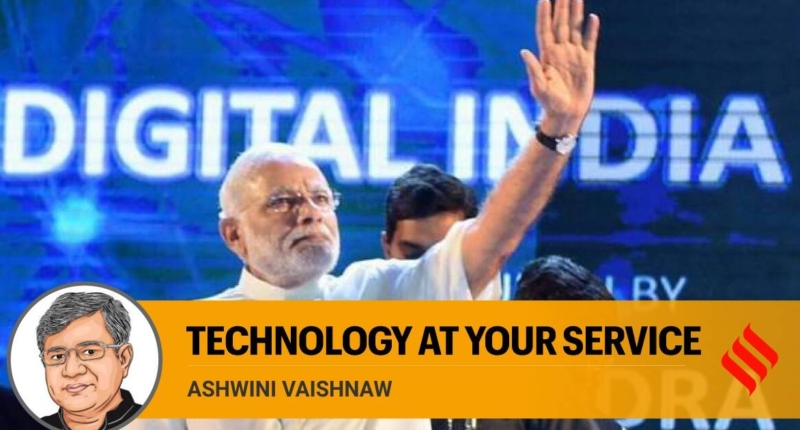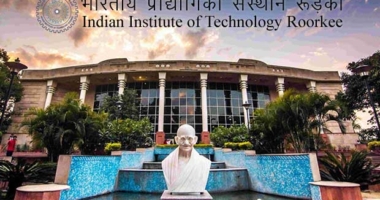India’s digital revolution has transformed the lives of its citizens, giving power to the poorest and most marginalized sections of society and enabling the young to create. The development of the CoWIN platform has allowed India to administer 150 crore vaccine doses within the first 12 months of the vaccination drive, making it a groundbreaking example of democratising digital technology. The UPI platform has become a global standard for digital payments, handling $1.5 trillion worth of transactions every year with an average settlement time of just two seconds. The Open Credit Enablement Network (OCEN) is the latest digital platform being developed by India, which will raise credit penetration by transitioning the system to cash flow-based lending. Under PM Modi’s leadership, India’s G20 Presidency is expected to be pathbreaking, serving and sharing India’s scalable public digital infrastructure with the world.
How Technology is Driving Inclusion in India
The digital revolution has had a profound impact on the lives of ordinary citizens, empowering the poorest and most marginalized members of society and providing young people with the tools they need to create a better future. Until recently, access to technology was considered a privilege reserved for the urban elite, and the internet was unaffordable for people in rural areas. However, this has changed dramatically over the past few years. In 2014, only 25 crore Indians had access to the internet, but by 2022, that number had risen to 84 crore.
This increase in accessibility can be attributed in large part to the efforts of Prime Minister Narendra Modi, who has driven inclusion through technology as part of his vision for a New India. One of the most significant changes has been the dramatic decrease in the cost of data. In the past, 1GB of data cost approximately Rs 300, but now it can be purchased for just Rs 13.5 per GB, making it much more affordable for the average Indian.
The COVID-19 pandemic was a challenging time for people all over the world, but Digital India helped to minimize the impact of the disruption. The affordability of the internet made it possible for people to access essential services, such as education and healthcare, from the safety of their own homes. For example, Suhani Sahu, a student in Balrampur, UP, was able to attend her course curriculum online via the Diksha platform when schools went virtual during the pandemic. Shubham Kumar, who lives in a village in East Champaran, Bihar, was able to get teleconsultations from a doctor on the eSanjeevani app for his ailing mother, saving both time and money.
The One Nation One Ration Card framework has also been a significant development, as it has made it possible for people to access food supplies from anywhere in the country. For example, Hari Ram, a taxi driver in Dehradun who had a ration card from Hardoi in UP, was able to access food supplies even in Dehradun thanks to this initiative.
Another development that has helped to drive inclusion is the use of technology to provide financial services in even the most remote corners of the country. Gramin Dak Sevaks of India Post have been using the Aadhaar Enabled Payment System (AePS) to provide financial service assistance at doorsteps, making it possible for people who live far from banks to access essential services.
These initiatives have been driven by PM Modi’s focus on turning technology into a tool for poverty reduction and improving the ease of living for all Indians. Digital technologies have become an integral part of people’s lives in India, and AI, 5G, and quantum technology have matured to the point where they are becoming mainstream. This makes 2023 an exciting inflection point, as India assumes the leadership of the G20 and showcases its technology platforms to the world with the philosophy of using them for the greater good.
The Role of Technology in India’s Vision-Led Transformation
Prime Minister Narendra Modi has made it clear that technology plays a crucial role in the country’s transformation. The Indian government’s efforts to create public digital platforms that are open-source, large-scale, and digitally-born have resulted in a complete digital transformation of the nation.
One of the most notable examples of this is the CoWIN platform, which enabled India to administer 150 crore vaccine doses within the first 12 months of the vaccination drive. The platform digitized the entire process of onboarding vaccine manufacturers, clinics, hospitals, registration of citizens, and scheduling, making it a groundbreaking example of democratising digital technology.
India has also shown a unique way of using technology to benefit society. QR code stickers for digital payments are now commonplace, even at roadside tea stalls. The UPI platform launched in 2016 now handles $1.5 trillion worth of transactions every year, with an average settlement time of just two seconds, making it a global standard for digital payments.
FASTag technology has reduced congestion and waiting times at toll plazas, enabling smooth movement within India’s borders and boosting digital payments.
The rollout of 5G technology in India is expected to take things to the next level. PM Modi has expressed his vision of using 5G in healthcare, education, agriculture, construction sectors, etc., to make living easy for people. India is also working towards becoming a 4G and 5G technology exporter in the next three years.
In a public-private partnership, banks, insurance companies, e-commerce companies, MSMEs, startups, and 120 crore people have joined a platform created with public funds. No single entity has complete control over the platform, making it democratic. This has led to an increase in transparency and convenience.
PM Modi’s focus on turning technology into a tool for improving the ease of living for all Indians is becoming increasingly visible by the day. The use of technology has enabled India to overcome challenges and create new opportunities. By leveraging technology in innovative ways, India is poised to become a global leader in digital transformation.
India’s Game-Changing Digital Revolution: The Open Credit Enablement Network (OCEN)
India’s engineers and scientists have proven their prowess with scalable digital public goods, and now the country is developing the Open Credit Enablement Network (OCEN), which will raise credit penetration by transitioning the system to cash flow-based lending. This will lead to competition among various banks for giving loans to individuals, thereby lowering the cost of credit. According to Morgan Stanley estimates, this will propel the credit to GDP ratio from the current 57% to 100% by 2031.
This game-changing digital and tech-led revolution, powered by PM Modi’s vision, is transforming the lives of ordinary citizens, empowering the poorest and most marginalized sections of society, and offering young people the ability to create. The model is now being replicated across different sectors, such as health, education, logistics, agriculture, and defense, with similar platforms being created on which startups and enterprises can build solutions.
India is entering its Amrit Kaal in times of global uncertainty, and under PM Modi’s leadership, the country’s G20 Presidency is expected to be pathbreaking, serving and sharing India’s scalable public digital infrastructure with the world.
Don’t miss interesting posts on Famousbio










